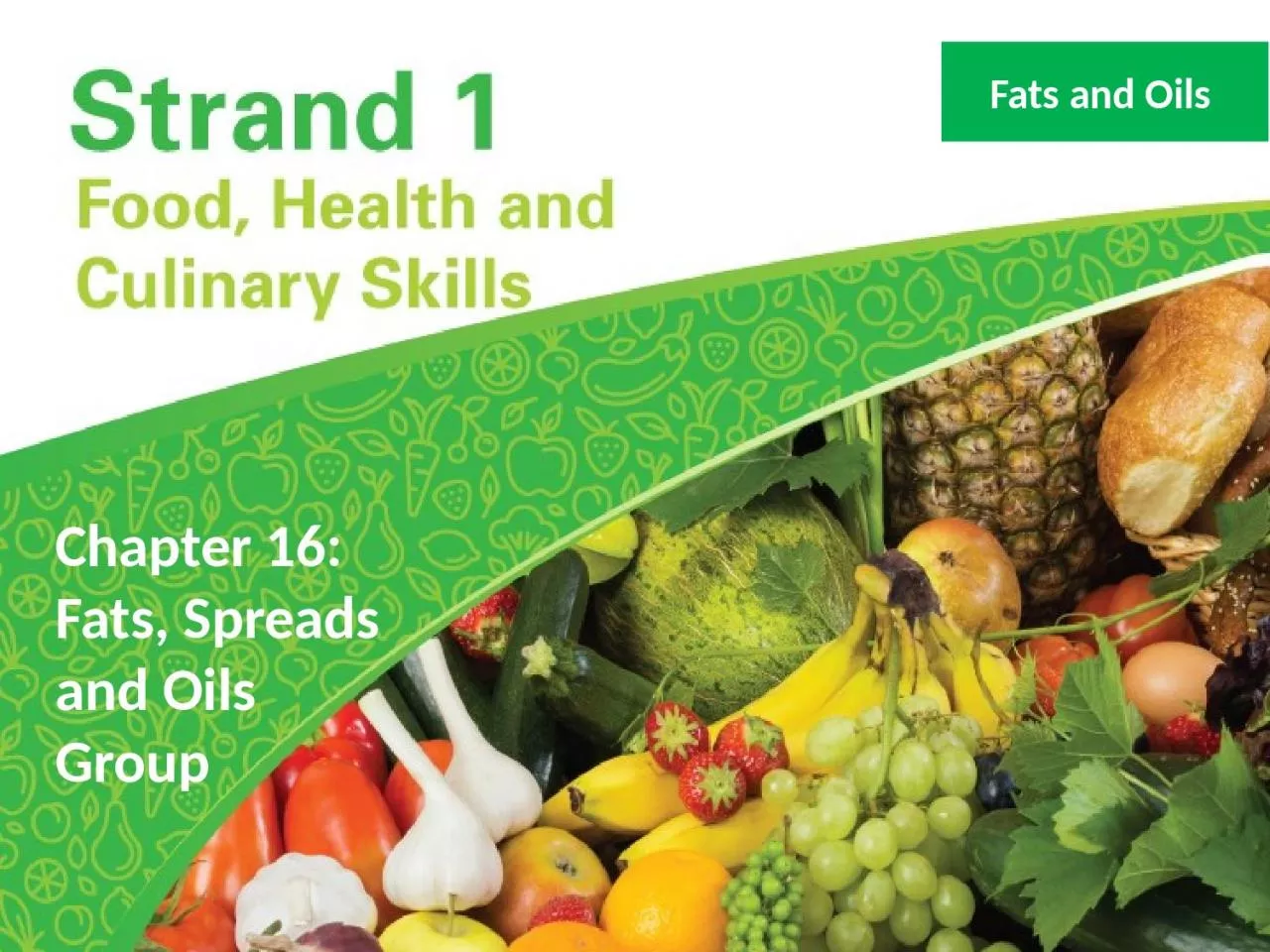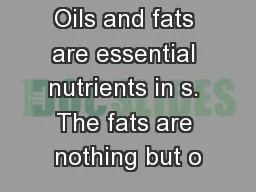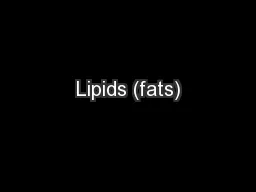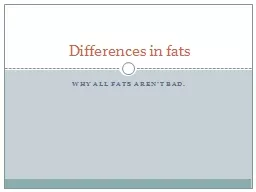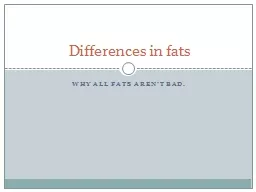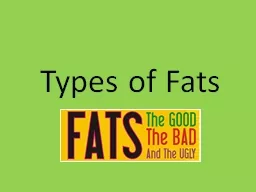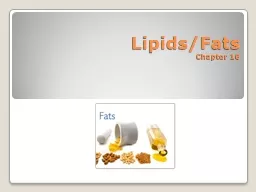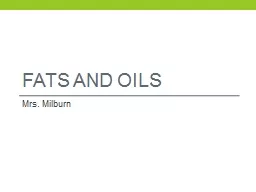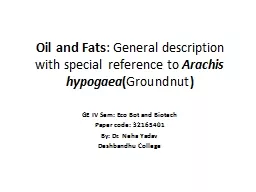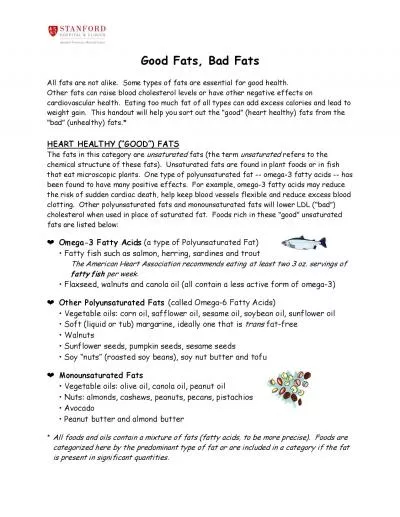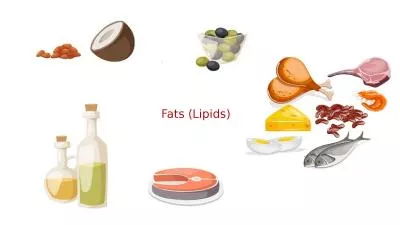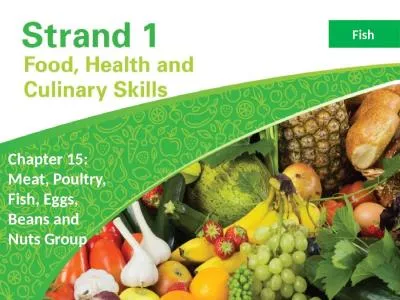PPT-What I Will Learn To classify fats and oils and give examples of each type
Author : gabriella | Published Date : 2024-02-02
To outline the nutritive and dietetic value of fats spreads and oils To explain how fats and vegetable oils are processed To compare and contrast dairy spreads To
Presentation Embed Code
Download Presentation
Download Presentation The PPT/PDF document "What I Will Learn To classify fats and o..." is the property of its rightful owner. Permission is granted to download and print the materials on this website for personal, non-commercial use only, and to display it on your personal computer provided you do not modify the materials and that you retain all copyright notices contained in the materials. By downloading content from our website, you accept the terms of this agreement.
What I Will Learn To classify fats and oils and give examples of each type: Transcript
Download Rules Of Document
"What I Will Learn To classify fats and oils and give examples of each type"The content belongs to its owner. You may download and print it for personal use, without modification, and keep all copyright notices. By downloading, you agree to these terms.
Related Documents

